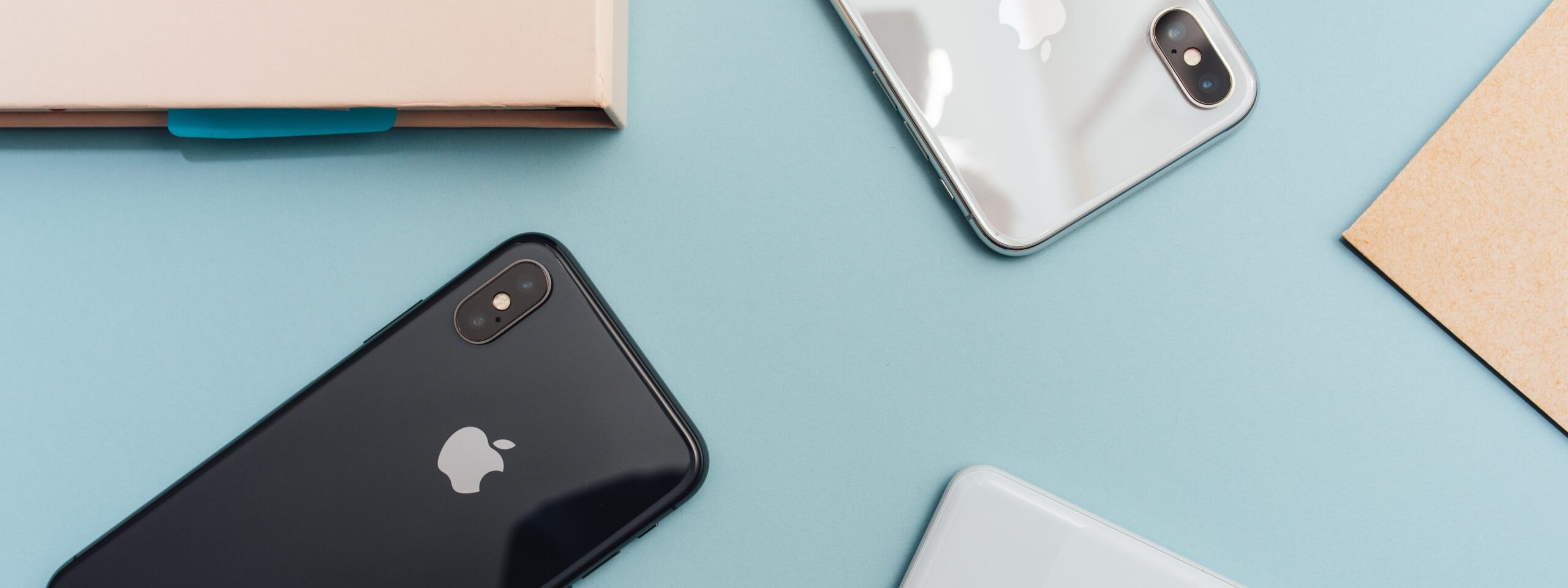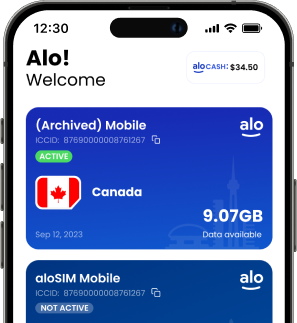Using an eSIM means you can swap phones, switch providers, or change/add coverage all without making any physical changes to your device.
But not everyone understands them yet …
That’s because it wasn’t too long ago that everyone had physical SIM cards in their phones. These little bits of plastic were invented in 1991 and are still being used 30 years later, although they’ve gotten a lot smaller with time. You know the drill — you pop them in and out of your phone if you change providers, and that tiny piece of tech is essential to running your phone properly. (No SIM? No service.)
Now, most manufacturers use embedded SIMs (a.k.a. eSIMs), rather than physical SIM cards. (Although standard SIM cards are sometimes still used in pay-as-you-go phone providers.) Your phone might already be using an eSIM and you don’t even realize!
From what eSIMS do and how they work, to if your phone even has one of these mysterious little things, here’s a run through some of the questions you might have about eSIM technology …
What does eSIM stand for?
eSIM stands for “Embedded SIM,” which means it’s something embedded within your device itself — not a physical piece that can be removed.
Oh, and “SIM” stands for “subscriber identity module.” Sounds very futuristic, right?
What is an eSIM? And how does an eSIM work?
An eSIM is a software-based version of a traditional chip-style SIM card, and it does the same job — only it’s more convenient.
Just like a regular removable SIM card, your eSIM is programmed with your phone’s unique details (serial number, authentication key, etc.) and without it, you can’t make any phone calls (except for 9-1-1).
What’s great about an eSIM is that it allows you to change things virtually, without visiting in-person stores or kiosks to have a physical SIM card changed or added. (And we’re all about errands that can be completed while we’re still lying in bed.)
Your phone is likely already set up for this technology, with a spot right there in the “Settings” section for switching between phone lines and carriers. It’s all very easy to do.
Why should I care about an eSIM?
Instead of having to trudge into a physical store to make changes to your mobile device, you can do it virtually with the touch of a button.
New phone number, while still hanging onto your original phone number? Done and done. Oh,you need a phone number in another country? Sure. Just like everything else in the world, this is becoming something that’s easy to do right on your phone.
If you travel for business or pleasure, you’ll love the convenience of being able to add an eSIM to your phone. Imagine going to another country and not paying through your nose for $$$ roaming charges?
Sometimes regular travelers hack this system by replacing their usual SIM card with a local SIM card for the country they’re in, but that means they don’t have access to their real phone number until they swap the cards back.
Adding a local eSIM to your phone means you can use your phone freely while traveling, and easily switch back to your main SIM whenever you want — or run both at the same time. Talk about a win/win, right?
What if I don’t do much international traveling?
No problem! You might also benefit from an eSIM if you’re ever in a location with shoddy service — like a family cottage, a rented vacation cabin, or a remote wilderness retreat with no way for someone to reach you in an emergency. Having an eSIM as a backup means you can quickly swap to a new provider with better coverage in a specific area.
If an eSIM isn’t a physical product, how come I’ve seen them sold in stores?
Ah, tricky! If you’ve seen a cardboard or plastic package promising to be an eSIM, it’s not a lie. That package just contains a special QR code and instructions on how to set it up. (But psssst, you can get the same set-up with aloSIM — no visit to a store required.)
Why is an eSIM helpful?
With a traditional SIM card in your phone, you were stuck with one provider — and one phone number at a time. But an eSIM’s information is “rewritable,” which means you can swap carriers or change your data plan via a phone call instead of actually hauling yourself down to the mall into the carrier’s local shop.
Any downsides to eSIM technology?
Not really, but if you were in the habit of swapping phones regularly with a partner, family member, etc., you’re not able to just pop out those tiny SIM cards and instantly be “switched” to a new phone.
Most people also don’t store their contacts on their SIM card, since backing your data up to the cloud is easier than ever — but this is something you can’t do with an eSIM, so save those digits elsewhere before a phone swap.
How do I know if my phone supports an eSIM?
Our friends at Pocket-lint have put together a really comprehensive list of which new phones are exclusively using eSIM technology, and which ones are using a hybrid model. (Basically it’s every iPhone from XR onward.)
Not all carriers support eSIM technology yet, either, but as long as they do, you’re good to go.
Will eSIMs change the way phones are made?
Yup, likely! Because phones won’t need space to hold a traditional SIM card, we might see new designs getting thinner and sleeker. Many smartwatches already include eSIMs, and Vodafone says we’ll even see them in glasses!
Moving from physical SIM cards to eSIMs is also a great move for the environment, since billions of plastic SIM cards are still produced each year.
Why didn’t my carrier tell me about my eSIM phone?
Probably because carriers aren’t always big fans of eSIM technology. Digital Trends points out that a carrier wouldn’t like the fact that consumers can hop between providers so quickly. (Carriers want you in the store, in person, so they can try to hang onto your business.)
PC Magazine also says it wasn’t too long ago that carriers outright tried to block eSIMs, in an attempt to save their business. (Imagine how sales will suffer at some of these stores if consumers aren’t wandering around in person, mindlessly browsing phone accessories while they wait for their new SIM card?)
The good news is that carriers are coming around, recognizing that the convenience of eSIMs is something they can’t ignore. eSIMs are here to stay, and someday we’ll think of traditional SIM cards like the rotary phones of the early ’10s.
Curious about how eSIM technology could work for you? Chat with aloSIM about local and regional eSIM service.





